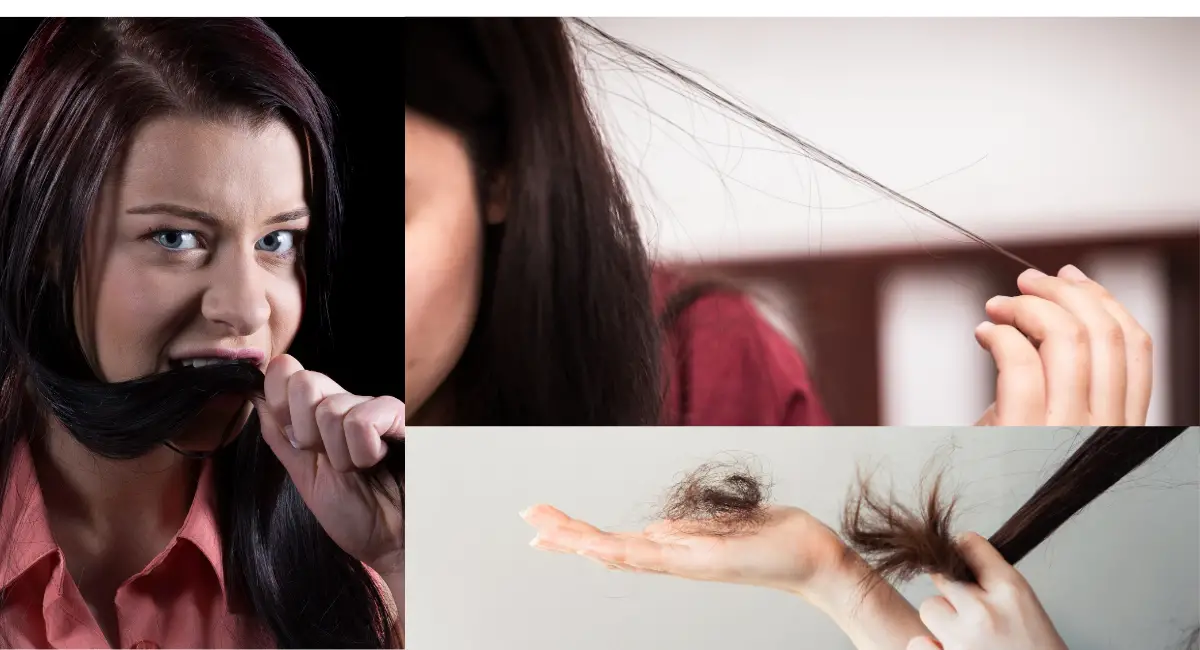Contents
Introduction

Voyeuristic Disorder: Symptoms, Causes, and Therapy Options
Voyeuristic Disorder is a type of Paraphilic Disorder characterized by intense sexual arousal from observing unsuspecting individuals who are naked, undressing, or engaging in sexual activities. This behavior is considered a disorder when it causes significant distress or impairment in functioning, or when the individual acts on these urges with non-consenting individuals. The disorder is typically secretive, and individuals may engage in risky or illegal behavior, such as peeping or using hidden cameras, to fulfill their urges.
According to the Diagnostic and Statistical Manual of Mental Disorders, Fifth Edition (DSM-5), Voyeuristic Disorder becomes clinically significant when it persists for at least six months, involves non-consenting individuals, or leads to personal distress or functional impairment. This article will explore the Symptoms, Causes, and Therapy Options for Voyeuristic Disorder in detail.
Symptoms of Voyeuristic Disorder
The symptoms of Voyeuristic Disorder revolve around the intense urge to observe unsuspecting individuals in private settings, such as in bathrooms, bedrooms, or other private spaces. Below is a table outlining common symptoms of Voyeuristic Disorder and examples of how they manifest:
| Symptom | Description/Example |
|---|---|
| Recurrent and Intense Sexual Arousal | Sexual arousal comes from watching unsuspecting individuals who are undressing or engaged in intimate activities. For example, someone might experience sexual excitement while spying on neighbors through their windows. |
| Obsessive Urges to Watch | Persistent and intrusive urges to observe others without their consent. For example, an individual may actively seek opportunities to engage in voyeuristic activities, even in risky situations like public restrooms. |
| Compulsive Behavior | The individual may repeatedly engage in voyeuristic behavior despite knowing it is illegal or harmful. For example, they may hide in secret locations or use hidden cameras to watch others. |
| Distress or Impairment | The individual experiences significant personal distress over their voyeuristic urges, or these behaviors interfere with daily life. They may feel shame or guilt about their actions. |
| Engagement in Risky or Illegal Activities | The individual may engage in illegal activities, such as trespassing or using surveillance devices, to observe people without their knowledge or consent. This behavior can result in legal consequences. |
Causes and Risk Factors of Voyeuristic Disorder
The development of Voyeuristic Disorder is influenced by a combination of genetic, psychological, and environmental factors. While the exact cause is not fully understood, several key risk factors contribute to the disorder’s development.
Major causes that we will discuss, include: Genetic and Biological Factors, Psychological Factors, Environmental and Cultural Factors
1. Genetic and Biological Factors
While no specific gene has been linked to Voyeuristic Disorder, some research suggests that individuals with paraphilic interests may have a genetic predisposition for atypical sexual behaviors. Hormonal influences and abnormalities in brain regions related to sexual arousal and impulse control may also play a role.
- Brain imaging studies have shown that individuals with Voyeuristic Disorder may exhibit abnormalities in the limbic system, a brain region responsible for emotions, sexual arousal, and impulse regulation.
- Elevated testosterone levels or imbalances in neurotransmitters such as dopamine and serotonin may increase the likelihood of developing Voyeuristic Disorder, as these chemicals play a critical role in sexual arousal and reward processing.
Tom, a 30-year-old man diagnosed with Voyeuristic Disorder, underwent brain scans that revealed abnormalities in his prefrontal cortex, which is responsible for impulse control. He also exhibited higher-than-normal levels of testosterone, which contributed to his heightened sexual drive.
2. Psychological Factors
Early life experiences and psychological development can contribute to the development of Voyeuristic Disorder. Individuals with low self-esteem, social anxiety, or difficulty forming intimate relationships may turn to voyeuristic activities to fulfill unmet emotional or sexual needs.
- Attachment theory suggests that individuals who experience insecure or avoidant attachments during childhood may have difficulty forming healthy relationships in adulthood, leading to the development of paraphilic interests as a substitute for emotional intimacy.
- Voyeuristic Disorder is often linked to feelings of inadequacy, powerlessness, or fear of rejection, which drives the individual to seek control or validation through secretive observation of others.
John, a 34-year-old man with Voyeuristic Disorder, reported struggling with social anxiety and feelings of inadequacy in his relationships. He began engaging in voyeuristic behavior as a way to feel in control and fulfill his sexual desires without having to confront his social fears.
3. Environmental and Cultural Factors
Exposure to inappropriate sexual experiences, such as early exposure to sexual content or witnessing non-consensual acts, can contribute to the development of Voyeuristic Disorder. Environmental factors such as cultural norms, media influence, and access to technology (e.g., hidden cameras) also play a role.
- Classical conditioning may occur when sexual arousal becomes linked to specific behaviors or stimuli during early sexual development. For example, if an individual experiences sexual arousal while secretly watching someone, they may repeatedly seek out this behavior to achieve arousal in the future.
- The rise of technology, including smartphones and hidden cameras, has made voyeuristic activities more accessible, increasing the potential for individuals to engage in inappropriate or illegal behavior.
Michael, a 28-year-old man, was exposed to pornography at a young age, which contributed to his later voyeuristic behavior. He began using hidden cameras to watch others without their consent, a behavior that escalated over time.
Therapy and Treatment Options for Voyeuristic Disorder
Treatment for Voyeuristic Disorder focuses on managing the inappropriate sexual urges and preventing the individual from engaging in harmful or illegal behavior. Effective therapy options include Cognitive Behavioral Therapy (CBT), Behavioral Therapy, and Pharmacotherapy.
1. Cognitive Behavioral Therapy (CBT)
Cognitive Behavioral Therapy (CBT) is a widely used treatment for individuals with Voyeuristic Disorder. It helps the individual identify and change the thought patterns and behaviors that lead to voyeuristic activities.
- CBT for Voyeuristic Disorder involves identifying the triggers for voyeuristic urges and developing coping strategies to manage these urges in healthier ways. This may include mindfulness techniques, stress management, and improving self-esteem.
- Therapy focuses on helping the individual understand the consequences of their behavior and develop more appropriate ways of achieving emotional and sexual satisfaction.
John, who had been diagnosed with Voyeuristic Disorder, participated in cognitive-behavioral therapy (CBT) to help manage his voyeuristic urges. Voyeuristic Disorder involves the recurrent urge to observe unsuspecting individuals, often in private or intimate situations, for sexual arousal. In therapy, John worked closely with his therapist to explore the thoughts, feelings, and situations that triggered these urges.
2. Behavioral Therapy
Behavioral Therapy involves using techniques such as aversion therapy or covert sensitization to reduce inappropriate sexual urges by creating negative associations with voyeuristic behavior.
- Aversion therapy involves pairing the inappropriate sexual urge with an unpleasant stimulus (such as imagining negative consequences or feelings of shame) to reduce the desire to engage in voyeuristic behavior.
- Covert sensitization involves the individual imagining themselves engaging in voyeuristic behavior and then experiencing negative consequences, such as legal trouble or personal humiliation, to reduce their arousal.
Michael, who had been diagnosed with Voyeuristic Disorder, participated in Behavioral Therapy to help manage his compulsive voyeuristic urges. Voyeuristic Disorder involves the recurrent urge to observe unsuspecting individuals for sexual arousal, often in situations where privacy is expected
3. Pharmacotherapy
Medications may be used to help manage the sexual urges associated with Voyeuristic Disorder, particularly in individuals who struggle to control their behavior. These medications, known as anti-androgens or Selective Serotonin Reuptake Inhibitors (SSRIs), help reduce sexual drive and compulsive behaviors.
- Anti-androgens, such as medroxyprogesterone acetate or cyproterone acetate, reduce testosterone levels in the body, which lowers sexual desire and arousal. These medications are typically prescribed for individuals with severe Paraphilic Disorders.
- SSRIs, which are commonly used to treat depression and anxiety, can also help reduce obsessive sexual thoughts and compulsive behaviors in individuals with Voyeuristic Disorder by regulating neurotransmitter levels in the brain.
Tom, who struggled with recurrent voyeuristic urges, was prescribed selective serotonin reuptake inhibitors (SSRIs) as part of his treatment plan. SSRIs are commonly used to treat obsessive-compulsive behaviors and disorders, as they help regulate serotonin levels in the brain, which can reduce the intensity of intrusive thoughts and compulsions.
Long-Term Management of Voyeuristic Disorder
Long-term management of Voyeuristic Disorder involves ongoing therapy, medication (if necessary), and behavioral adjustments. Key strategies for long-term management include:
- Continued Participation in Therapy: Regular CBT or Behavioral Therapy sessions help individuals maintain control over their voyeuristic urges and prevent relapse.
- Medication Management: Individuals on anti-androgen or SSRI therapy must adhere to their prescribed regimen to keep their urges under control.
- Support and Monitoring: Regular check-ins with a therapist or support group can provide emotional support and accountability, helping individuals stay committed to managing their disorder.
Conclusion
Voyeuristic Disorder is a form of Paraphilic Disorder characterized by intense sexual arousal from observing non-consenting individuals in private settings. The causes of Voyeuristic Disorder include genetic predisposition, psychological factors, and early life experiences. Effective treatment options, such as Cognitive Behavioral Therapy (CBT), Behavioral Therapy, and Pharmacotherapy, focus on reducing inappropriate sexual urges and helping individuals manage their behavior. Long-term management strategies, including ongoing therapy and medication, are essential for preventing relapse and improving the individual’s quality of life.
References
- American Psychiatric Association. (2013). Diagnostic and statistical manual of mental disorders (5th ed.). American Psychiatric Publishing.
- Kafka, M. P. (2014). The paraphilias and depathologizing sexual variants. Archives of Sexual Behavior, 43(6), 1251-1262.
- Laws, D. R., & O’Donohue, W. (Eds.). (2008). Sexual deviance: Theory, assessment, and treatment. Guilford Press.
- Seto, M. C. (2013). Voyeurism and exhibitionism. In Encyclopedia of behavioral medicine (pp. 2569-2572). Springer.
- McConaghy, N. (1999). Behavioral treatment of paraphilias. The Journal of Sex Research, 36(3), 228-240.
- Marshall, W. L., & Barbaree, H. E. (2006). The sexual offender: History, risk factors, and treatment. Journal of Consulting and Clinical Psychology, 74(4), 538-546.
- Quinsey, V. L., & Berliner, L. (2001). The etiology of sexual offending: A review of research. Psychology, Crime & Law, 7(1), 75-97.
- Blanchard, R., & Lykins, A. D. (2007). Paraphilias: Origins and controversies. Journal of Abnormal Psychology, 116(3), 694-705.
- Freund, K., & Watson, W. L. (2004). The treatment of paraphilic disorders: Advances and future directions. Canadian Journal of Psychiatry, 49(4), 259-267.
- Shindel, A. W., & Sultani, M. (2008). Sexual masochism disorder: Diagnostic and therapeutic challenges. Journal of Sexual Medicine, 5(6), 1460-1466.
Explore Other Mental Health Issues








